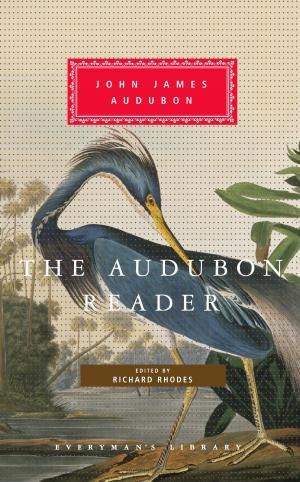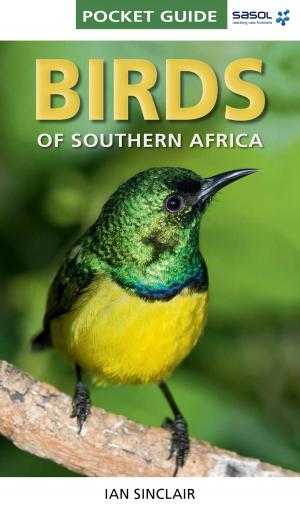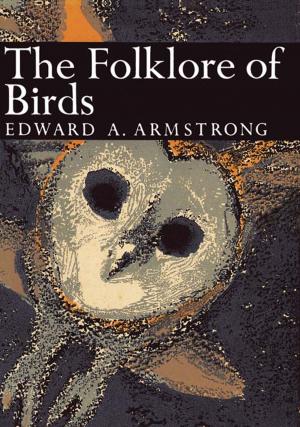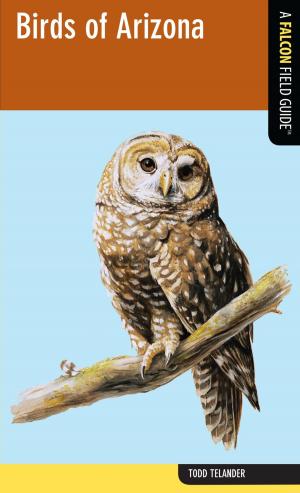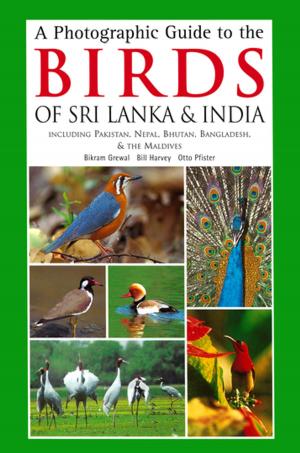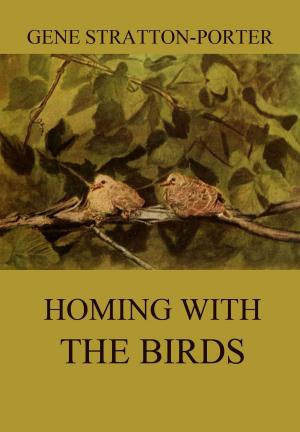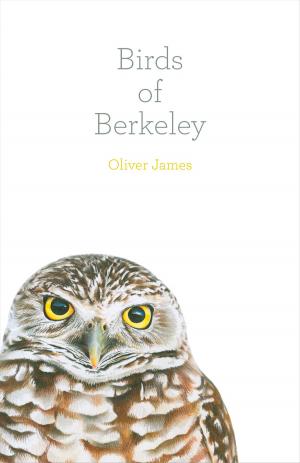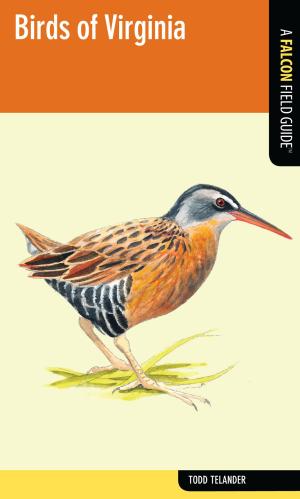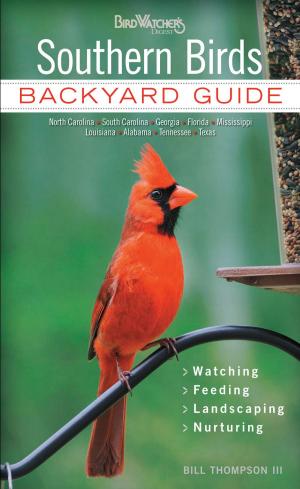Birds and Nature Vol. 9 No. 3 [March 1901]
Nonfiction, Science & Nature, Nature, Plant Life, Trees, Plants, Animals, Birds & Birdwatching| Author: | Various, William Kerr Higley | ISBN: | 1230000293771 |
| Publisher: | CHICAGO A. W. MUMFORD, Publisher | Publication: | January 28, 2015 |
| Imprint: | Language: | English |
| Author: | Various, William Kerr Higley |
| ISBN: | 1230000293771 |
| Publisher: | CHICAGO A. W. MUMFORD, Publisher |
| Publication: | January 28, 2015 |
| Imprint: | |
| Language: | English |
Example in this ebook
ABOUT PARROTS.
Naturalists place the parrot group at the head of bird creation. This is done, not, of course, because parrots can talk, but because they display, on the whole, a greater amount of intelligence, of cleverness and adaptability to circumstances than other birds, including even their cunning rivals, the ravens and the jackdaws.
It may well be asked what are the causes of the exceptionally high intelligence in parrots. The answer which I suggest is that an intimate connection exists throughout the animal world between mental development and the power of grasping an object all round, so as to know exactly its shape and its tactile properties. The possession of an effective prehensile organ—a hand or its equivalent—seems to be the first great requisite for the evolution of a high order of intellect. Man and the monkeys, for example, have a pair of hands; and in their case one can see at a glance how dependent is their intelligence upon these grasping organs. All human arts base themselves ultimately upon the human hand; and our nearest relatives, the anthropoid apes, approach humanity to some extent by reason of their ever-active and busy little fingers. The elephant, again, has his flexible trunk, which, as we have all heard over and over again, is equally well adapted to pick up a pin or to break the great boughs of tropical forest trees. The squirrel, also, remarkable for his unusual intelligence when judged by a rodent standard, uses his little paws as hands by which he can grasp a nut or fruit all round, and so gain in his small mind a clear conception of its true shape and properties. Throughout the animal kingdom generally, indeed, this chain of causation makes itself everywhere felt; no high intelligence without a highly-developed prehensile and grasping organ.
Perhaps the opossum is the best and most crucial instance that can be found of the intimate connection which exists between touch and intellect. The opossum is a marsupial; it belongs to the same group of lowly-organized, antiquated and pouch-bearing animals as the kangaroo, the wombat, and other Australian mammals. Everybody knows that the marsupials, as a class, are preternaturally dull—are perhaps the least intelligent of all existing quadrupeds. And this is reasonable when one considers the subject, for they represent a very early type, the first “rough sketch” of the mammalian idea, with brains unsharpened as yet by contact with the world in the fierce competition of the struggle for life as it displays itself on the crowded stage of the great continents. They stand, in fact, to the lions and tigers, the elephants and horses, the monkeys and squirrels of America and Europe, as the native Australian stands to the American or the Englishman. They are the last relic of the original secondary quadrupeds, stranded for centuries on a Southern island, and still keeping up among Australian forests the antique type of life that went out of fashion elsewhere a vast number of years ago. Hence they have brains of poor quality, a fact amply demonstrated by the kangaroo when one watches his behavior in the zoological gardens.
To be continue in this ebook
Example in this ebook
ABOUT PARROTS.
Naturalists place the parrot group at the head of bird creation. This is done, not, of course, because parrots can talk, but because they display, on the whole, a greater amount of intelligence, of cleverness and adaptability to circumstances than other birds, including even their cunning rivals, the ravens and the jackdaws.
It may well be asked what are the causes of the exceptionally high intelligence in parrots. The answer which I suggest is that an intimate connection exists throughout the animal world between mental development and the power of grasping an object all round, so as to know exactly its shape and its tactile properties. The possession of an effective prehensile organ—a hand or its equivalent—seems to be the first great requisite for the evolution of a high order of intellect. Man and the monkeys, for example, have a pair of hands; and in their case one can see at a glance how dependent is their intelligence upon these grasping organs. All human arts base themselves ultimately upon the human hand; and our nearest relatives, the anthropoid apes, approach humanity to some extent by reason of their ever-active and busy little fingers. The elephant, again, has his flexible trunk, which, as we have all heard over and over again, is equally well adapted to pick up a pin or to break the great boughs of tropical forest trees. The squirrel, also, remarkable for his unusual intelligence when judged by a rodent standard, uses his little paws as hands by which he can grasp a nut or fruit all round, and so gain in his small mind a clear conception of its true shape and properties. Throughout the animal kingdom generally, indeed, this chain of causation makes itself everywhere felt; no high intelligence without a highly-developed prehensile and grasping organ.
Perhaps the opossum is the best and most crucial instance that can be found of the intimate connection which exists between touch and intellect. The opossum is a marsupial; it belongs to the same group of lowly-organized, antiquated and pouch-bearing animals as the kangaroo, the wombat, and other Australian mammals. Everybody knows that the marsupials, as a class, are preternaturally dull—are perhaps the least intelligent of all existing quadrupeds. And this is reasonable when one considers the subject, for they represent a very early type, the first “rough sketch” of the mammalian idea, with brains unsharpened as yet by contact with the world in the fierce competition of the struggle for life as it displays itself on the crowded stage of the great continents. They stand, in fact, to the lions and tigers, the elephants and horses, the monkeys and squirrels of America and Europe, as the native Australian stands to the American or the Englishman. They are the last relic of the original secondary quadrupeds, stranded for centuries on a Southern island, and still keeping up among Australian forests the antique type of life that went out of fashion elsewhere a vast number of years ago. Hence they have brains of poor quality, a fact amply demonstrated by the kangaroo when one watches his behavior in the zoological gardens.
To be continue in this ebook
![Cover of the book Birds and Nature Vol. 9 No. 3 [March 1901] by Various, William Kerr Higley, CHICAGO A. W. MUMFORD, Publisher](https://www.kuoky.com/images/2015/january/500x500/1230000293771-Bzqc_500x.jpg)
